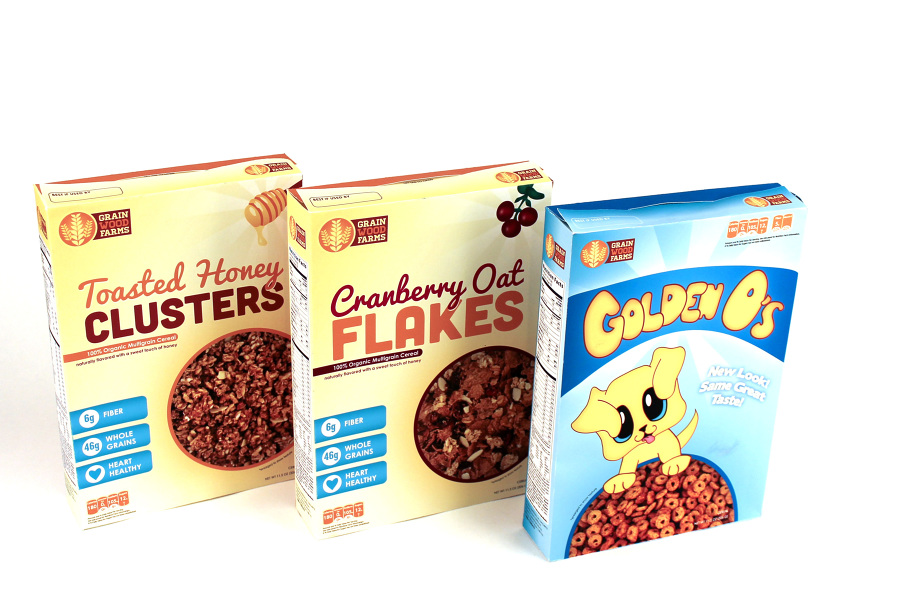Eco-friendly packaging is making a strong impact on the way products are made, delivered, and consumed. In the food industry, this shift is especially visible. More brands are now turning toward sustainable choices to meet customer demands and environmental needs. One area that is rapidly changing is the packaging of breakfast cereals. Let’s explore how eco-friendly changes are shaping the future of cereal boxes and why they matter.
The Growing Shift Towards Sustainable Materials
Sustainable materials are leading the way in changing how custom cereal boxes are made. Traditional packaging often used plastic films or glossy coatings that were hard to recycle. These materials ended up in landfills and took hundreds of years to break down. Today, more companies are choosing recycled cardboard, biodegradable inks, and plant-based coatings.
The most used material in sustainable packaging is recycled paperboard. It requires less energy to produce and is easy to recycle again after use. Some companies are also exploring hemp, bamboo, and agricultural waste as raw materials. These sources grow fast and leave a smaller environmental footprint.
Using natural adhesives instead of synthetic glues is another step forward. These glues are made from plant starches or natural rubber, which reduces chemical waste. This change may seem small, but it matters greatly in the long run.
This growing shift also includes non-toxic inks made from vegetables. These inks are safer for printing and help maintain the recyclable quality of the box. Unlike traditional petroleum-based inks, they don’t release harmful chemicals during printing or recycling.
As a result, packaging becomes not just eco-friendly but also safer for consumers. When these boxes come into contact with food, the risk of chemical contamination is lower. This safety measure is very important in food-grade packaging.
Reducing Carbon Footprints With Green Manufacturing
Green manufacturing is a major factor in lowering the environmental impact of packaging. The way cereal boxes are produced has a big role in energy use and carbon emissions. Today, many manufacturers are investing in cleaner production lines.
One important change is the use of renewable energy. Some companies now power their factories with solar or wind energy. This greatly reduces reliance on fossil fuels and cuts down emissions. It also helps lower the overall cost of production in the long term.
Another key approach is reducing waste during production. New technology allows machines to cut materials more accurately. This means fewer scraps are wasted and fewer resources are needed. Water recycling systems are also being used in many factories. These systems clean and reuse water, which saves thousands of gallons every day.
The transportation of boxes has also become more eco-friendly. Boxes made from lighter and more flexible materials use less fuel during shipping. Some companies design flat-packed boxes that take up less space. This means more products can be transported in one trip, reducing delivery emissions.
Manufacturers are also working closely with suppliers to improve supply chain sustainability. By choosing local sources for materials, they reduce the distance that goods must travel. This change lowers fuel use and supports local economies.
The Role of Consumer Awareness in Packaging Evolution
Consumer demand is a strong driver behind the move to eco-friendly packaging. More people are now aware of the harm caused by plastic and other harmful materials. As a result, they look for brands that match their values.
Many shoppers today read packaging labels before buying. They want to know if the box is recyclable or made from recycled content. This rise in informed choices has led brands to change how they present and produce packaging.
Surveys show that younger customers, especially millennials and Gen Z, are more likely to buy products that come in sustainable packaging. They are even willing to pay a little more for this benefit. This shift in behavior has created a new standard for companies.
Brands that ignore this trend risk falling behind. On the other hand, those that embrace green packaging win customer trust. They also get positive attention on social media, which boosts brand visibility.
Educational campaigns also play a part in this change. Many companies include tips on how to recycle the box on the packaging itself. This encourages customers to take part in reducing waste and builds a deeper connection with the brand.
Innovations in Biodegradable and Compostable Packaging
One of the most exciting trends in packaging is the use of biodegradable and compostable materials. These options offer new ways to reduce waste and protect the environment.
Biodegradable packaging breaks down naturally over time. It doesn’t need special treatment or facilities. This is ideal for cereal boxes that often end up in household waste bins. These boxes can return to the earth without harming the soil.
Compostable materials go a step further. When disposed of properly, they turn into nutrient-rich compost. This process helps gardens and farms grow better plants. Some companies are now using linings made from cornstarch instead of plastic. These linings offer the same barrier against moisture but break down quickly in a compost environment.
The challenge is making sure these materials still protect the food inside. New research has led to coatings that keep cereals fresh but are still safe for the planet. Many of these coatings are made from seaweed, wax, or sugarcane fibers.
By using these materials, brands reduce the need for landfill space. They also avoid the pollution caused by plastic packaging. These small efforts create a big impact when done on a large scale.
Branding and Eco-Friendly Packaging: A Natural Match
Sustainability is now part of brand identity. Many companies are turning to eco-friendly packaging as a way to tell their story and share their values. A cereal box is no longer just a container. It’s a marketing tool that speaks directly to the customer.
The look and feel of green packaging are often more appealing. Textures are natural, colors are earthy, and designs are clean. These features attract buyers who want more than just a product. They want to feel good about their purchase.
Some brands use minimalist designs to reflect their eco-conscious efforts. Others print stories about their environmental journey right on the box. This honest and open communication helps build trust.
Eco-friendly boxes are also easier to customize in unique and personal ways. With digital printing, companies can create small runs with different designs. This flexibility allows brands to respond quickly to trends or seasons.
By using sustainable packaging, brands send a clear message. They show that they care not only about profits but also about the planet. This message builds stronger customer loyalty and opens the door to long-term success.
Government Policies and Industry Regulations Supporting Change
Regulations play a key role in pushing the packaging industry towards sustainability. Around the world, governments are making rules that promote eco-friendly practices.
Many regions now ban single-use plastics or require businesses to meet recycling standards. This shift forces companies to find better options for their packaging. As a result, paper-based and compostable materials are in higher demand.
Some governments offer tax credits or funding for companies that go green. These programs help offset the cost of changing materials and equipment. Small businesses especially benefit from this support.
Rules around labeling have also changed. Companies must clearly state whether their packaging is recyclable or biodegradable. This makes it easier for consumers to make informed choices.
Industry groups also create guidelines to support green practices. These groups help companies share knowledge, tools, and best practices. When businesses work together, they make change happen faster.
As rules become more strict, eco-friendly packaging will no longer be optional. It will be a required part of doing business. Companies that act now will be better prepared for the future.
Reducing Packaging Waste Through Smart Design
Design plays a key role in reducing waste. Smart packaging design can lower material use, reduce printing needs, and even improve how the product is stored and shipped.
One strategy is to design boxes that use a single layer of material. This cuts down on coatings, adhesives, and extra wrapping. Another idea is to create resealable tops, which help keep the cereal fresh and remove the need for extra bags.
Designers also focus on box shapes. A compact shape not only fits better on store shelves but also saves space during transport. This leads to fewer delivery trips and lower carbon emissions.
Here are some design choices helping reduce packaging waste:
- Fold-flat designs for easier shipping and storage
- Dual-use packaging that turns into toys or puzzles for kids
- Clear disposal instructions printed on the box
These small but clever changes help lower the environmental impact of packaging without raising costs. As a result, both businesses and customers benefit.
Consumer Trends Driving Green Packaging Growth
The trend toward eco-friendly packaging is not slowing down. In fact, it is growing faster than ever. More people want brands that care about the earth, and they are showing this in their buying habits.
Social media plays a big part in this trend. Customers often share pictures of smart, green packaging online. This free marketing helps brands stand out. When someone sees a post about a box made from plant fibers, they might want to try it too.
Reviews and ratings also show that people value sustainable efforts. Products with eco-friendly packaging often get higher scores and better feedback.
Some customers even go out of their way to shop from companies that use sustainable packaging. This loyalty makes it clear: good packaging isn’t just about looks, it’s about values.
The focus on health and wellness adds to this trend. If a product is organic or natural, customers expect the same from its packaging. That’s why many healthy food brands choose eco-packaging as part of their identity.
In this growing market, custom cereal boxes designed with sustainable materials are becoming a standard. They show that a company understands the value of good design, clean living, and environmental care—all in one box.




